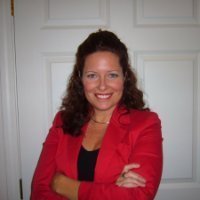Gaylene Anderson is a full-time Cleveland Clinic employee embedded in the University of Notre Dame’s Office of Technology Transfer – a unique academic-medical collaboration that includes five other health systems around the country to help move research discovery to commercial application.

In her spare time, Anderson assembles and coaches eclectic teams of experts to develop business plans and launch startup companies. Her first team at Notre Dame, which included ESTEEM student Patrick Rice, won the $25,000 grand prize in the Mendoza College of Business’s McCloskey Business Plan Competition this year. The company is developing a rinse-and-spit test that can provide early detection of human papillomavirus (HPV) that causes an incurable throat cancer.
Anderson started her yearly hobby of one or two startups more than a decade ago, after she went to work for Richard Cox at the University of Hawaii. (When he asked her to work in “tech transfer,” her first response was “Do you mean manage all the computers on campus?” – but her background in a family of lawyers and her education and experience in health care helped her learn fast.) Cox, now director of Notre Dame’s Office of Technology Transfer, recruited her to manage the Cleveland Clinic partnership last year.
“This is the only partnership like this in the country, with a major hospital and a major university,” she says. “The Cleveland Clinic has an alliance program, and there are seven institutions in that club. Notre Dame is the only academic partner.” The arrangement manages health care and life science intellectual property, helps create new ventures, and boosts the research enterprise across the institutions, which offer a depth of wisdom and experience.
“It’s nice to have that kind of expertise and information we can call on,” Anderson says, adding that about 60 people at the Cleveland Clinic alone are involved in such transfer work. “Our researchers are much more engaged in basic research. It’s nice to have them engaged with doctors. A lot of those doctors at the clinic have relationships with companies that are working on products or testing products. It’s getting help on the market research side on the value of the technology.”
Anderson developed her annual team-creation effort as a win-win way to get talented help with business plans while providing hands-on experience for top students in fields from finance and accounting to law and science. She had started NanDio last year when Rice joined the group, leading to closer ongoing collaboration among campus initiatives like ESTEEM and Technology Transfer. She expects to organize two teams this year.
“Notre Dame has some things here that I have never seen on another campus,” she says. “When they first started, they weren’t all connected together. This year it feels like we’re connected. The programs keep evolving and advancing and they seem to be a little more tied together. We’re not duplicating efforts, and we’re helping each other out.”